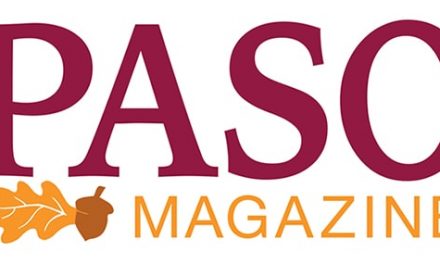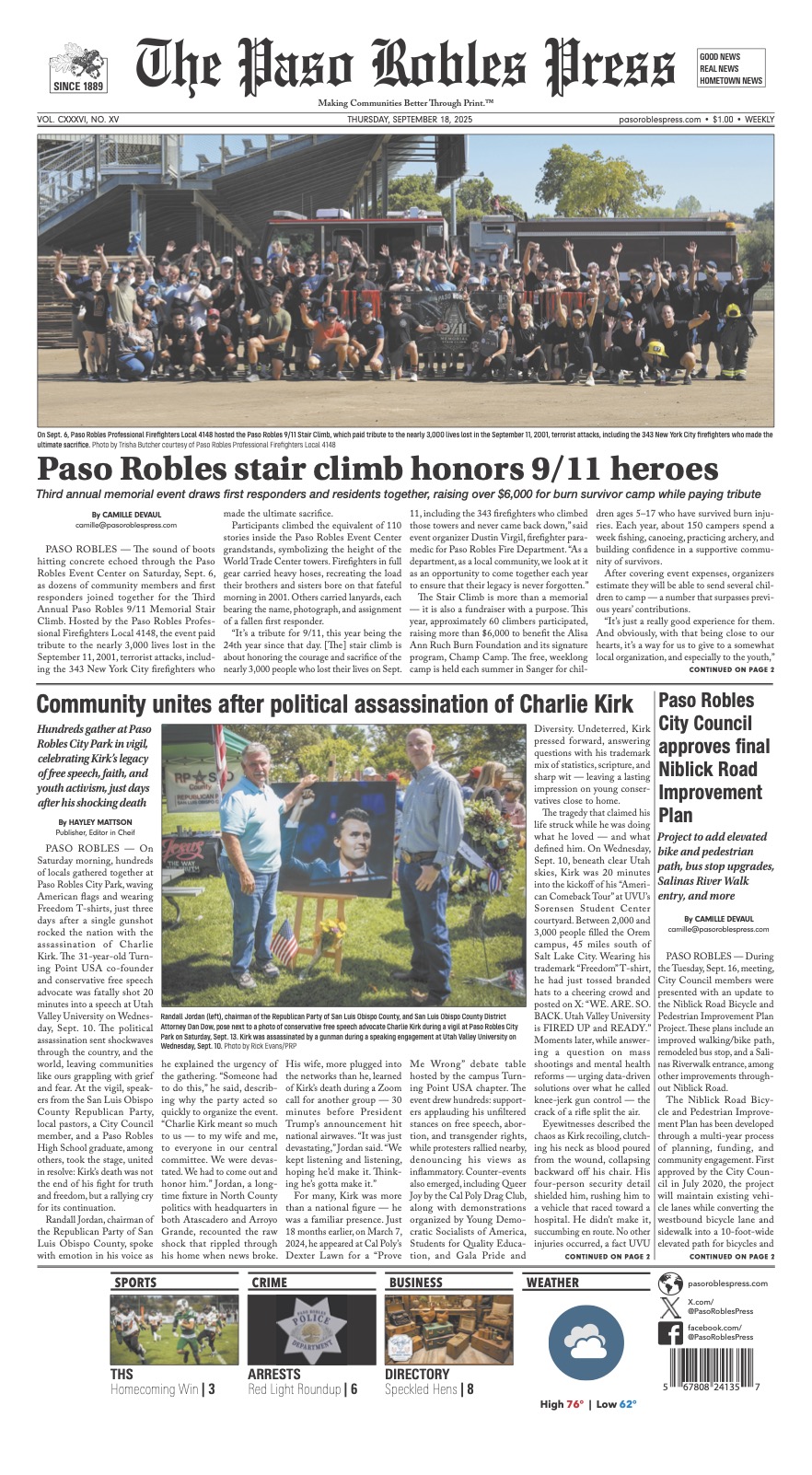Central Coast History with Tom Taylor
Publisher’s Note: Welcome to “Flash History” — a compilation of historical facts as discovered and organized by PASO Magazine contributor Tom Taylor. We love history around here, and hope you enjoy Tom’s Flash History column. For the inaugural submission, let’s take a trip with Tom down memory lane along the historic El Camino Real. Enjoy.
 Driving down the US 101 we have all seen the distinctive bells along the highway. Each bell is hung from a shepherd’s crook, also described as “Franciscan walking stick”. These bells, first placed in 1906 by the California Federation of Women’s Clubs and later upgraded with more bells in 2005, mark the route of the El Camino Real (The King’s Highway). In fact, originally, all roads were the “kings’ highways,” but this one helped link the presidios (military forts), pueblos (civil towns) and our 21 missions. It ran 600 miles from San Diego to Sonoma.
Driving down the US 101 we have all seen the distinctive bells along the highway. Each bell is hung from a shepherd’s crook, also described as “Franciscan walking stick”. These bells, first placed in 1906 by the California Federation of Women’s Clubs and later upgraded with more bells in 2005, mark the route of the El Camino Real (The King’s Highway). In fact, originally, all roads were the “kings’ highways,” but this one helped link the presidios (military forts), pueblos (civil towns) and our 21 missions. It ran 600 miles from San Diego to Sonoma.
 The roads started out as footpaths when Spain began building the missions to parry the territorial ambitions of Russia and England. The exact routes were not fixed and changed over time due to weather and mode of travel. For instance, ships rather than the royal road usually transported goods and passengers over long distances.
The roads started out as footpaths when Spain began building the missions to parry the territorial ambitions of Russia and England. The exact routes were not fixed and changed over time due to weather and mode of travel. For instance, ships rather than the royal road usually transported goods and passengers over long distances.
As for our North SLO County neighborhood, the Cuesta Canyon has always proved difficult. The Indian footpath that the Padres walked to go from Mission San Luis Obispo to the Asistencia Santa Margarita was inaccessible after a good rain. Leaving San Luis Obispo and nearing the summit, the canyon rose 580 feet, or 58 stories. The first stage over Cuesta was in 1855 — it was a two-horse stage. Later six- and eight-horse stages were used.
It wasn’t until 1878 that the construction of Stagecoach Road, funded in the amount of $20,000 by the first bond issued in San Luis Obispo County, made traveling easier. The “new” road was carved into the side of the hills way above the Padre’s Trail and San Luis Obispo Creek making the grade easier for the freight wagons and stages. There was, however, still a good share of “run-away” accidents. Going north, you could now stop for lunch at the Waterfalls Saloon and stay for the night at the Eight-mile House just past the summit.
State Route 2, as it was later known, was moved onto the easterly slope in 1915. The total cost was $58,771. It was said the plan looked like a bunch of “elbow macaroni.” State Route 2 was eventually paved with concrete and you can still see parts of it today.
El Camino Real entered into the modern age in 1938, with a price tag of $945,000. The roadway finally reached two 21-foot wide lanes divided by a 4-foot parting strip. You could now reach the summit in less than a half hour. WOW. They named the new route the Cuesta Highway because it didn’t sound so daunting. Nobody ever used the new name.
The names of the roadway in the Santa Lucias were; Indian Trail, Padre’s Trail, Stagecoach Road, Mountain Road, County Road One, Cuesta Pass, Cuesta Road, State Route 2, Cuesta Highway, State Route 101 and US 101. Other names are; Juan Batista de Anza National Historic Trail, Purple Heart Trail and Alex Madonna Memorial Highway.











